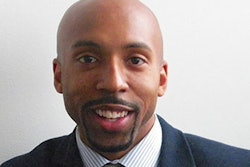The statistics are impressive on the increased participation of women and girls in sports since Title IX became a federal civil rights law that bans sex-based discrimination at any educational entity receiving federal funds. According to research by the Women’s Sports Foundation (WSF), the percentage of women athletes competing on college teams has risen from 15% in 1972 to 44% in the 2020-21 academic year. But despite the increase, few institutions are in Title IX compliance.
 Sarah Axelson
Sarah Axelson
Title IX impacts not only athletics, but it affects sexual misconduct policies on college and university campuses. There were rollbacks on protections for victims during the Trump administration that are being addressed and possibly rectified by the Biden administration, but thorough safeguards and protections are still not in place at all institutions of higher education.
“The most important part of my job is educating administrators across college campuses on what exactly Title IX means,” says Alexis F. Trumble, associate attorney at Nelson Mullins Riley & Scarborough LLP. In practice, the former collegiate gymnast focuses on aspects of litigation and education law, particularly on federal Title IX compliance. Colleges and universities hire her to review all aspects of their institutions and to identify areas that need improvement.
Title IX is only 37 words. “The interpretations of Title IX over the last 50 years really run the show, except those interpretations are written by and for lawyers,” says Trumble. “The questions I get relate to what Title IX actually means for a boots-on-the-ground college president, general counsel, head coach, [or] athletic trainer, because 37 words are simply too short to cover all of the various areas of education that Title IX touches.”
Athletics
Studies conducted by the WSF and the 2021 Kaplan Hecker & Fink LLP review of the NCAA’s approach to women’s championships documented gross gender inequalities across Divisions I, II, and III. This included a disproportionate number of athletic opportunities for male athletes and a shortfall in investment in women’s athletic programs, including athletic scholarships, recruiting, and coach compensation. The WSF is also researching an increase in noncompliance since the onset of the COVID-19 pandemic.
“Title IX covers not just participation; it covers scholarship opportunities, benefits and services, and everything else that goes into a traditional student-athlete experience,” says Axelson. “Whether it’s facilities, the uniforms, the scheduling and game times, the coaching, all of that goes into a sport experience and the way student-athletes are treated. That’s where we see some of the discrepancies in current day.”
The onus is on the people experiencing discrimination to understand their rights and know what to do about it, says Axelson. The WSF maintains staunch advocacy for Title IX. One crucial part is educating the public on their rights and empowering them to advocate for change. “To really see more compliance… we need the people on the ground experiencing the discrimination to know that it is discrimination,” explains Axelson.
 Lisa N. Cloutier
Lisa N. Cloutier
Cloutier points out that “another big piece is you can’t talk about Title IX… without talking about trans and non-binary students who are under such assault in this country both in the athletics realm and then obviously much more broadly.” She says she believes policing girls’ and women’s bodies and enforcing gender stereotypes is the antithesis of Title IX, but multiple states are passing laws banning transgender girls from sports.
“The Trump administration had rolled back all protections for trans students under Title IX,” says Cloutier, who conceded that addressing the rollback on the federal level is a work in progress.
Sexual misconduct
Cloutier says rollbacks from the Trump administration had a severe impact on the survivors of assault, particularly transgender and non-binary students. There are instances of LGBTQ individuals being harassed by professors and colleagues for their gender expression.
There have been improvements over the past 10 years, says Cloutier. But the ongoing issue is that, even if a student perseveres through the grueling Title IX process and the perpetrator is found responsible, often sanctions are not commensurate with the severity of the harm caused. She mentions one matter where the respondent managed to stall the process until after he finished his last semester, which meant the one-semester suspension had no impact.
“We are far behind in addressing Title IX sex discrimination in the areas of sexual misconduct, sexual harassment, sex-based harassment,” says Dr. Sandra Hodgin, founder and CEO of Title IX Consulting Group. “The country is very much divided in really understanding the controversies behind why there’s such a rape culture and why campuses and schools tend to want to protect their images and reputations versus protecting their own students and employees.”
Hodgin is called upon to look at policies and procedures at various institutions and help administrators and their legal counsel understand the pitfalls and red flags that exist. She provides recommendations for compliance as well as best practices that help campuses reduce liability. Most institutions are receptive, she says, but there has been a small minority of campuses that refuse to make changes, preferring to settle lawsuits.
Trumble’s research thesis as an undergraduate was about sexual and gendered violence on college campuses. During law school, a summer internship with a firm that had an extensive Title IX practice inspired her to focus on that area of the law.
“Helping to educate college administrators, whether they’re in student life, student discipline, or in athletics, about what’s required of them [is her focus],” Trumble says. “The various pathways that they have to compliance and helping them develop strategies that allow them to proactively and intentionally improve and maintain Title IX compliance.”
Trumble goes through weight rooms, locker rooms, and practice facilities to assess athletic compliance and access to equitable resources, and she rewrites institutions’ Title IX sexual misconduct policies to make sure they’re compliant with current regulations. As new regulations are promulgated, Trumble says, she sees increased requests for review of sexual misconduct policies. “When the Title IX sexual misconduct landscape changes, so do my clients’ needs,” she says.
Continued effort
A non-compliant school risks losing federal funding, although Trumble is not aware of the Office for Civil Rights (federal enforcement authority) ever imposing the penalty. Other motivations, both for individuals and institutions, include wanting to avoid negative publicity and desiring to provide equitable opportunities. She says she sees many institutions being intentional in addressing compliance.
“There are certainly cultural and societal issues at play as we look at gender equity in sports,” says Axelson. “Sports can help push the cultural narrative and push for cultural change.”
It remains difficult to address Title IX issues through litigation on a case-by-case or school-by-school basis, Cloutier notes. Sometimes, public pressure is the most effective tool to propel change. She says this has been abundantly true in athletics and she sees it in Title IX sexual assault matters.
At the “utopian Title IX campus,” Hodgin says, there would be a very clear Title IX office where everyone knows who the Title IX coordinator is and what to do if there is any injustice on campus related to sex discrimination. Information about the office would be thoroughly disseminated across campus and anyone working in the Title IX office would be well-trained in all aspects of compliance.
“They would know to provide supportive measures to ensure the students feeling safe, and that would go for the complainant and the respondent,” says Hodgin. “They would also make sure that if the respondent is dangerous to the community, they’d understand they have to remove that individual for a short period of time during the investigation to ensure the safety of the community. They would not be afraid of doing that.”
Campuses would also have safety measures, such as multiple blue lights (emergency alarm stations) throughout the entire campus and ample security personnel trained in how to handle trauma.
“More and more campuses are understanding that they need to change,” Hodgin says. “People are trying to understand the human aspect.”


















